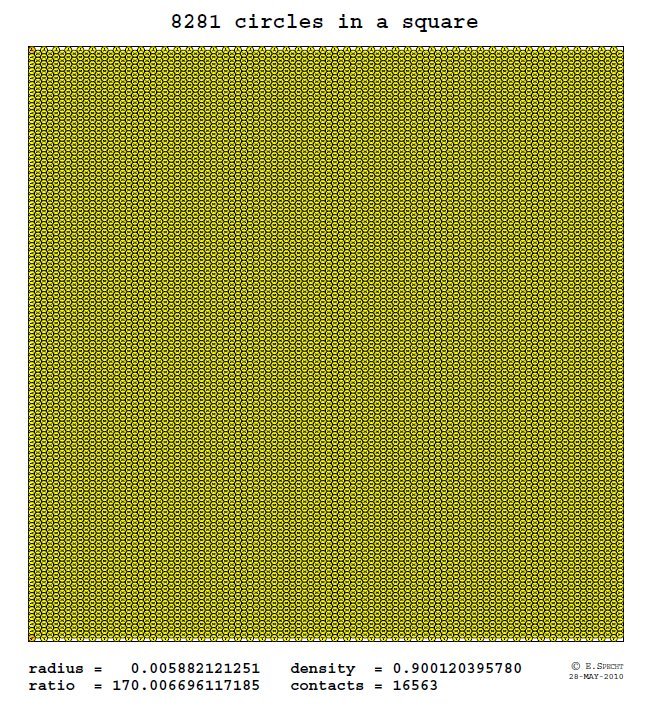Dlanod is building huts (the end)
Dlanod the greedy developer is still dreaming of buying a square plot of land and building some vacation huts on in, circular as viewed from above, each with a diameter of six meters. He has not given up on his plan to build them wall-to-wall, although this might be a bit inconvenient for the unfortunate tourists who will have to stay there. Dlanod's chief architect, who went to Yale, advises him that, regardless of the details of the arrangement, he will have to buy at least square meters of land for each hut. Dlanod states that "his intuition" tells him otherwise, and he will be able to do better. Who is right?
Prove the architect's claim, or provide a detailed plan for an arrangement (including the number of huts and the size of the plot) that proves the architect wrong.
This section requires Javascript.
You are seeing this because something didn't load right. We suggest you, (a) try
refreshing the page, (b) enabling javascript if it is disabled on your browser and,
finally, (c)
loading the
non-javascript version of this page
. We're sorry about the hassle.

The plan is to place the huts in a "honeycomb pattern," in p rows with q cottages each, as shown in the attached figure, where p = 6 and q = 7 . We can place the huts onto a rectangular plot with Length L = 6 q + 3 and width W = 6 + 3 3 ( p − 1 ) . For our construction, we will choose the largest p such that W < L , namely, p = ⌈ 3 2 q − 1 ⌉ , so that the huts will fit on a square plot with side length L = 6 q + 3 , with a little extra yard space left for some "luxury" huts in the top and/or bottom rows. The amount of land we need per cottage is p q ( 6 q + 3 ) 2 = q ⌈ 3 2 q − 1 ⌉ ( 6 q + 3 ) 2 The limit of this expression, as we let q go to infinity, is 1 8 3 < 3 1 . 2 < 1 0 π , so that the amount of land we need per cottage will be < 1 0 π for sufficiently large q , namely, for all q ≥ 2 0 0 and for some smaller ones.
Once again, Dlanod is right . The resort will be huge, of truly Dlanodian proportions.
Regardless of the details of the arrangement, Dlanod will need to buy at least 1 8 3 > 3 1 . 1 7 square meters per hut, though.